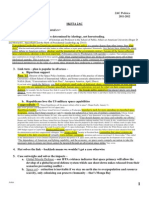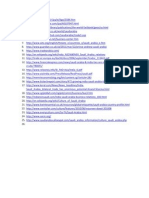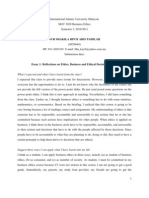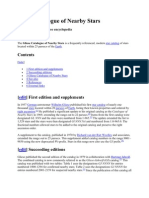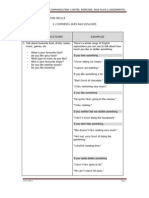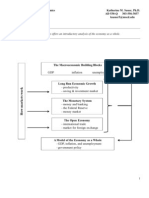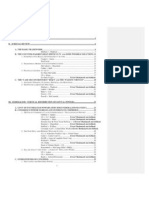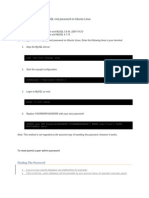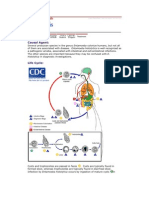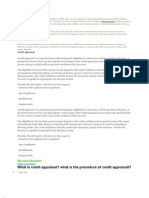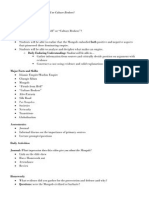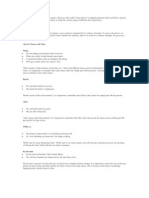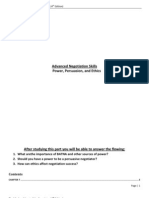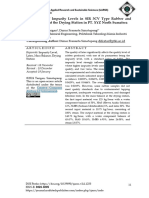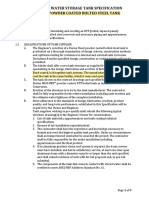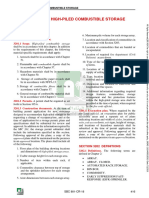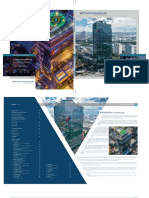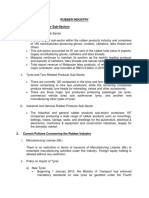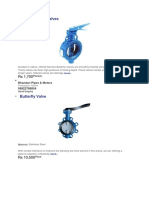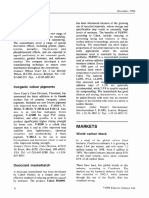FINANCIAL MANAGEMENT
PROJECT REPORT ON FINANCIAL ANALYSIS OF TYRES AND TUBES INDUSTRY
SUBMITTED TO : Prof. Sushma Vishnani
SUBMITTED BY: Shruti Srivastava (JIML-11-153) Raju Kumar Sharma(jiml-11-FS-042) Prachi Agarwal (jiml-11-FS-040) Rashmi Pandey (jiml-11-FS-043) Pragya Singh (jiml-11-FS-041)
�Acknowledgement
It was indeed an opportunity for us to prepare a Financial Analysis Project Report during the programme PGDM for the subject Operations Management. During our search for preparing this Project Report, we learnt many interesting things about the industry.
Preparation of such kind of report, which is based on primary and secondary information, requires data gathering from many sources like Prowess, Site. Securities, Money Control, Company Reports, and Other Literature.
We would like to express our gratitude to Prof. Sushma Vishnani for her valuable guidance and help in the preparation of this Report. At last but not least, we are thankful to all our friends and other people, who helped us in preparation of this Project Report
�TYRES AND TUBES INDUSTRY:
AN INTRODUCTION
The origin of the Indian Tyre Industry dates back to 1926 when Dunlop Rubber Limited set up the first tyre company in West Bengal. MRF followed suit in 1946. Since then, the Indian tyre industry has grown rapidly. The Indian tyre industry produces the complete range of tyres required by the Indian automotive industry, except for aero tyres and some specialised tyres. Domestic manufacturers produce tyres for trucks, buses, passenger cars, jeeps, light trucks, tractors (front, rear and trailer), animal drawn vehicles, scooters, motorcycles, mopeds, bicycles and off-the-road vehicles and special defence vehicles. The scenario in India stands in sharp contrast to that in the world tyre market, where car tyres (including light trucks) have the major share (88%) by volume followed by truck tyres (12%). In India, however, passenger car tyres have a mere 17% share of the overall tyre market (as of FY2003) In the domestic market, tyre manufacturers are expected to increasingly focus on expanding their dealership networks & explore possibilities of tie-ups among themselves to penetrate the growing customer base. They are also likely to pursue innovative measures (such as "dial-a-tyre service and road shows) to improve customer awareness. The consolidation of the Indian tyre industry is likely to continue in the coming years through mergers among existing players. The industry is likely to expand through a combination of organic and inorganic growth. While organic growth would come from raising efficiency levels, inorganic growth would be achieved through alliances and M&As
�LIST OF COMPANIES FOR FINANCIAL ANALYSIS
y y y y y APOLLO CEAT JK GOODYEAR MRF
�FINANCIAL ANALYSIS OF THE INDUSTRY
Tyres and tubes industry:-
SD Mean(Monthly) SD(Yearly) Mean(Yearly) Beta R-square P-Value (Monthly) 1.561369989 -0.323166667 18.73643987 -3.878 0.048737452 0.075342617 0.033805456
The Indian tyres and tubes industry is not good or we can say it is bad if we consider the yearly return of -3.878. the reasons behind this can be many like one of the major reason can be recent economic down turn which caused major down flow in demand of rubber products including tyres and low profit margins of various companies because of increase in prices of raw rubber.
The risk of investment in tyres and tubes industry is very low of 18.73643987. This figure is justified with figures of industry average ratios like debt equity ratio (0.924), and interest coverage ratios.(3.592) As debt equity ratio of industry is 0.924 which means industry is more relying on equity which is very much safe in comparison to debt capital, the investment in tyres and tubes industry is very much safe but the return is negative thus we would suggest not to do investment in whole industry.
�COMPANIES FINANCIAL ANALYSIS
APOLLO TYRES LTD.
INTRODUCTION
Apollo Tyres Limited originated in the year 1975. It offers varied products to its costumers. The products include Passenger Cars, Sports Utility Vehicles, Van, Passenger Vehicle Winter, Heavy Commercial Vehicle, Light Commercial Vehicle, Dura Treads, and Vulcanizing Solution.
FINANCIAL ANALYSIS
Standard Deviation(Risk) monthly 14.84863263
Mean Monthly 2.7906666666 7
Standard Deviation(Risk)yearly 178.1835916
Mean yearly( return) 33.488
Beta
R-square
1.22646 0772
0.527546 943
INTERCOMPANY ANALYSIS
The return of Apollo tyres ltd. is average or we can say that it is on the positive side which is clearly reflected in its monthly return (see the data sheet) which is fluctuating over the period. The return is not consistent is also reflects in its mean return of 33.488, it is second lowest among the set companies, it is so because of its fluctuating return and many reasons, like it has an average Return on Assets (ROA) of 9.91 which is not so good in comparison of Goodyear and MRF which has ROA of 28.9425 and 10.6225.
�And Assets turn over (ATO) of the company is 1.71 which is also not so encouraging in comparison to other companies because it has one of the lowest ATO. Apollo tyres ltd.s performance is related to markets performance by 52.75% as R square is 0.527546943 As ROA shows the profitability of company on a given level of investment, and ATO represents ability of company to use its assets to generate sales, we can conclude that return of Apollo tyres is average over five year. As it is good against the companies like J K Tyre & Inds. Ltd. but it is lower than all other companies in the set. Riskiness of investment in Apollo is lowest of 178.183 in comparison to other companies of the set. Because it has average current ratio of 2.56:1 which means company has sufficient cash to pay of its short term liabilities and also because proper composition of debt in its capital structure which is shown with debt equity ratio of 33.618. One of the main reasons for low standard deviation (Risk) is good average interest cover ratio of 4.724 in comparison of companies like Ceat, JK tyres. If any company would have high interest coverage ratio then this means it has more cash or we can say that company is in good position easily pay back its interest obligation, which means there is low risk which reflects in its standard deviation figure. Beta of company is 1.2264 which is greater than 1 which means company is aggressive. As for analysis of any statistical information its accuracy should be checked with the help of its P-value. In case of Apollo tyres P-value is 5.10E*10^-11, as this value is smaller than 0.05 this means regression analysis of Apollo is statistically correct.
Regression Statistics Multiple R 0.726324268 R Square 0.527546943 Adjusted R 0.5194012 Square Standard Error 10.29384924 Observations 60
Intercept X Variable 1
Coefficients 0.876365812 1.226460772
Standard Error 1.350051501 0.152401219
t Stat 0.649135 8.047578
P-value 0.518813389 5.09754E-11
�APOLLO TYRES COMPARED WITH TYRE AND TUBES INDUSTRY
Industry figures:-
Standard Deviation(Risk) monthly
Mean Monthly
Standard Deviation(Risk)yearly
Mean yearly( return)
1.561369989
-0.32316666
18.73643987
-3.878
The return of the Apollo tyres ltd. of 33.488 is good if we examine the return of the whole tyres and tubes industry which is -3.878, if we diversify our investment in whole tyres and tubes industry it would result in capital loss as it is giving negative return. But the risk of investment in this industry is also very low (18.7364) if we compare the risk of investing in only in Apollo tyres ltd. (178.1835916). One reason is diversification and these figures of risk is also justified by figure of debt equity ratio of the company and the industry. As average debt equity of industry is 0.924 which very low in comparison with the debt equity ratio of Apollo tyres ltd. which is 33.618
�CEAT TYRES LTD.
INTRODUCTION
On the road since 1958, CEAT has run up to be one of the best tyre manufacturers in the business. Ceat not only make trailblazing tyres, but also market tubes and flaps. And that's not all. CEAT personifies the business; tough yet smooth, secure yet ready to explore the undaunted. More than 3000 Cr annual turnover, an impressive list of clients and OEMs, various awards and certificates are statistics that could speak for. With CEAT there wide range of tyres that suit your needs and vehicle type. (Not to mention, their radials are racers in the world market!) Strength is one of the most important attributes of their products, which complements solid foundation as a part of RPG Enterprises.
FINANCIAL ANALYSIS
Standard Mean Deviation(Ris Monthly k)monthly 19.97503587 3.07716666 7
Standard Deviation(Risk)yea rly 239.7004304
Mean yearly 36.926
Beta
Rsquare 0.43994 1935
1.506 68301 4
�INTERCOMPANY ANALYSIS
The return of Ceat ltd. is not too bad or good over the period or which is clearly reflected in its monthly return (see the data sheet) which is fluctuating over the period. The return of Ceat ltd is inconsistent as its reflecting its mean return of 36.926, which is third lowest among the set companies, it is so because of its fluctuating return and many reason like it has an average Return on Assets (ROA) of 6.814 which is not so good in comparison to Apollo, Goodyear and MRF which has ROA of 9.91, 28.9425 and 10.6225. And Assets turnover ratio (ATR) of the company is 1.794 which is also not so encouraging in comparison to other companies except Apollo which has an ATR of 1.71 and it has a second lowest ATR among all the companies. Ceat ltd.s performance is related to markets performance by 43.99% as R square is 0.439941935. Now ROA shows the profitability of company on a given level of investment, and ATR represents ability of company to use its assets to generate sales, we can conclude that return of Ceat ltd is average over five year. But it is good against the companies J K Tyre but it is lower than all other companies in the set. Riskiness of investment in Apollo is second highest of 239.7004304 in comparison to other companies in the set which is not good for the company as it shows that the company bears a high level of risk. Because it has average current ratio of 1.365:1 which means company has not sufficient cash to pay its short term liabilities and also because high composition of debt in its capital structure which is shown with debt equity ratio of 52.91, as debt is more riskier and this company is using more leverage it results in increasing overall risk of the company. One of the main reasons for high standard deviation (Risk) is not so good average interest cover ratio of 2.474 which is second lowest in comparison to other companies. It means creditors have very less cover for repayment of their interest, which add on increasing overall risk of the company. Beta of company is 1.507 which is greater than 1 which means company is aggressive. As in case of Ceat ltd P-value is 7.70247E*10^-09, which is very less than 0.05 which means this statistical data is correct/accurate.
Regression Statistics Multiple R 0.663281188 R Square 0.439941935 Adjusted R Square 0.430285761
�Standard Error Observations
15.07704061 60
Intercept X Variable 1
Coefficients 0.725485596 1.506683014
Standard Error 1.97737317 0.223216731
t Stat 0.366894 6.749866
P-value 0.715034 7.7E-09
CEAT TYRES COMPARED WITH TYRE AND TUBES INDUSTRY
Industry figures:Standard Deviation(Ris k)monthly 1.561369989 Mean Monthly Standard Mean Deviation(Risk)yea yearly rly (retur n) 18.73643987 -3.878
-0.32316666
The Ceat ltd has a return of 36.92 which is very good as compared to industry which has a return of -3.878. Here we can see that the risk of investment in the whole industry is very low i.e. 18.73643987 in comparison to the risk of the investment in Ceat ltd which has risk of 239.7004304, as industry has very low debt equity ratio 0.924 . Hence it is very risky to invest in Ceat ltd. in comparison to whole tyres and tubes industry.
�JK TYRES LTD.
INTRODUCTION
The company is in manufacturing of automobile tyres, tubes and flaps. It also manufactures bulk drugs and intermediates. The company markets agricultural products. The plants are located at Udaipur in Rajasthan, Morena in Madhya Pradesh and Bareilly in Uttar Pradesh.
FINANCIAL ANALYSIS
Standard Deviation(Risk) monthly Mean Monthly Standard Deviation(Risk)yearly Mean yearly Beta R-square
18.52183568
2.30883333 3
222.2620281
27.70 6
1.40876 2503
0.44733 6386
INTERCOMPANY ANALYSIS The return of J K tyres ltd. is the lowest among all the companies, which is clearly reflected in its monthly return (see the data sheet) which is less than zero for most of the months. The return does not have any fixed pattern i.e. fluctuating over the period, which can be seen through its yearly return of 27.706. One of the reason for J K tyre ltd. having the lowest return is the lowest return on asset i.e. 4.80, through this we can conclude that company is not able to generate much profit on the given level investment, and Assets turn over (ATO) of the company is 1.60 which is also not so encouraging in comparison to other companies because it has the lowest ATO.
�Sensitivity of J K tyres ltd.s with the market movements is 44.73 % as its R square is 0.447336386. As ROA shows the profitability of company on a given level of investment, and ATO represents ability of company to use its assets to generate sales, we can conclude that return of J K tyres is the lowest over the five years period. From the data sheet we have observed that J K tyres returns were less than zero for most of the time but large hike is seen once a year, which shows the inconsistency of the company.
Although the returns of J K tyres ltd is the lowest but its riskiness of investment in not the lowest of 222.2620 in comparison to other companies of the set. Because it has less current ratio of 1.36:1 which shows companys inability to pay its short term obligations and it does not have the sufficient cash to pay its short term liabilities and also its debt to equity ratio is very high which means the company is enjoying more financial leverage due to which risk is high. One of the main reasons for high standard deviation (Risk) with respect to the returns being offered by the company is the lowest interest cover ratio of 2.1275 among all the companies in the set. Beta of company is 1.408 which is greater than 1 which means company is aggressive and not fit for investment. In case of J K tyres, P-value is 5.198*10^-09, as this value is smaller than 0.05 this means regression analysis of J K tyres ltd. is statistically correct.
Regression Statistics Multiple R 0.668832106 R Square 0.447336386 Adjusted R Square 0.437807703 Standard Error 13.88757675 Observations 60
Intercept X Variable 1
Coefficients 0.10998986 1.408762503
Standard Error 1.821373 0.205607
t Stat 0.060388 6.851737
P-value 0.952054 5.2E-09
�JK TYRES COMPARED WITH TYRE AND TUBES INDUSTRY
Standard Deviation(Risk) monthly
Mean Monthly
Standard Deviation(Risk)yearly
Mean yearly( return)
1.561369989
-0.32316666
18.73643987
-3.878
The return of the J K tyres ltd. of 27.706 is good if we compare it with the return of the whole tyres and tubes industry which is -3.878, this large gap in the returns of the J K tyres ltd and the industry is due to diversification of the whole industry i.e. some companies are giving better returns at the same time some companies have negative returns But the risk of investment in this industry is also very low (18.7364) if we compare the risk of investing in only in J K tyres ltd. which has the risk of 222.2620281. One reason is diversification and these figures of risk are also justified by figure of debt equity ratio of the company and the industry. As average debt equity of industry is 0.924 which very low in comparison with the debt equity ratio of J K tyres ltd. which is 78.03.
�GOODYEAR TYRES LTD.
AN INTRODUCTION:
Goodyear's presence in India is over 90 years old, with two plants, one each in Ballabgarh and Aurangabad. In the passenger car segment, Goodyear supplies tyres to many of the leading Original Equipment Manufacturers in India. Goodyear India has been a pioneer in introducing tubeless radial tyres in the passenger car segment. In the farm segment, Goodyear tyres are supplied to all the major tractor companies. Similarly, for buses and trucks, vehicles rolling out of the assembly line of the leading OEMs are often seen with Goodyear tyres. In 2010/11, Goodyear India was awarded the prestigious Super brands status. Goodyear is one of the world's largest tyre companies. It employs approximately 72,000 people and manufactures its products in 55 facilities in 22 countries around the world. Its two Innovation Centers in Akron, Ohio and Colmar-Berg, Luxembourg strive to develop state-of-theart products and services that set the technology and performance standard for the industry
FINANCIAL ANALYSIS:
Standard Deviation(Risk) Monthly 17.69316279
Mean Monthly
Standard Deviation(Risk)yearly
Mean yearly 48.024
Beta
R-square
212.3179535
4.002
0.966828 236
0.230894 94
�INTERCOMPANY ANALYSIS
The Goodyear tyres ltd. Is fetching fair returns as shown in the data sheet, It is on the positive side with nearly less fluctuations i.e. it can be interpreted the company is stable over the period of time. The return, as it is clearly reflected in its mean return is of 48.024 which is highest amongst the given companies, the reason for strong returns of the company can be further consolidated by its high Return on Assets (ROA) 28.9425 which is the highest in comparison to other companies ROA depicts how much profit a company has generated. The return on assets figure is also a sure-fire way to gauge the asset intensity of a business Further the Assets turnover (ATO) of the company (4.6271) is also very encouraging as it is the highest amongst Apollo (1.71), Ceat (1.794) , MRF ( 2.9225) , JK ( 1.60). Asset turnover is a financial ratio that measures the efficiency of a company's use of its assets in generating sales revenue or sales income to the company Goodyear tyres ltd.s performance is related to markets performance by 23.08 % as R square is 0.23089494 Thus as far as the returns for the company is concerned it can be concluded that Goodyear is fetching stable and strong returns. Goodyear tyres ltd. plays safe when it comes to taking risk in comparison to other companies. It can be depicted by its low standard deviation (212.3179535). Standard Deviation is a representation of the risk associated with price-fluctuations of a given asset of a company. The debt equity structure (0.48) of the company is the lowest amongst the debt equity of other companies. This signifies the company is not much dependent on debts. One of the main reasons for low standard deviation (Risk) is a strong average interest cover ratio of 22.66 in comparison to all other companies like Ceat, MRF, Apollo, JK tyres. A strong average interest cover ratio signifies how easily a company can pay interest on outstanding debt. Goodyear has a current ratio of 1.504:1 which means company can face some problems in covering its short term loans. Beta of company is 0.966828236 which is less than 1 which means company is not aggressive. Company is Risk Averse in nature. As for analysis of any statistical information of its accuracy can be checked with the help of its P-value. Which in case of Goodyear tyres is 0.000102029, as this value is very small when compared with 0.05 this means regression analysis of Goodyear is statistically correct.
�Regression Statistics Multiple R 0.480515286 R Square 0.23089494 Adjusted R Square 0.217634508 Standard Error 15.64985495 Observations 60
Intercept X Variable 1
Coefficients 2.492942262 0.966828236
Standard Error 2.052499 0.231697
t Stat 1.214589 4.172808
P-value 0.229445 0.000102
GOODYEAR TYRES COMPARED WITH TYRE AND TUBES INDUSTRY
Industry figures:-
Standard Deviation(Risk) monthly
Mean Monthly
Standard Deviation(Risk)yearly
Mean yearly( return)
1.561369989
-0.32316666
18.73643987
-3.878
The Goodyear tyres ltd. when compared to whole of the industry it is analyzed that returns of Goodyear (48.024) are much strong when compared to that of the industry ( -3.878) . The tyres and tubes industry is fetching negative returns the reasons that can be predicted are the market downturn. The risk of the tyres and tubes industry (18.73643987) is low as it can be analyzed from the given table. The risk when compared to Goodyear risk, can be estimated that company is risk taking in nature
�MRF TYRES LTD.
AN INTRODUCTION
In 1960 MRF set up its pilot plant for tyre manufacture at Tiruvottiyur, Madras by establishing a technical collaboration with the Mansfield Tire & Rubber Company of USA. Established as toyballoon manufacturing company in 1946 by KM Mammen Mappillai, MRF quickly emerged as the leading maker of tread rubber. Since then, the company hasn't looked back. The fact that it is the first tyre company in India to reach a turnover of 5000 Crores is testament to its dominance of the industry
FINANCIAL ANALYSIS.
Standard Deviation(Risk) monthly Mean Monthly Standard Deviation(Risk)yearly Mean yearly Beta R-square
21.15652455 3.1375
253.8782946
37.65
1.677431 114
0.48610 2045
INTERCOMAPNY ANALYSIS
The return of MRF tyres ltd. is not much on the positive side which is clearly reflected in its monthly return (see the data sheet) as its returns are fluctuating over the period. The return is good as compared to majority of the company of the given sets as it is clearly reflected in the mean return which is 37.65, it is second highest amongst the given companies, because it has good return of assets of 10.6225 in comparison to companies like Applo, Ceat, JK tyres ltd, which has ROA of 9.91, 6.81 and 4.80 respectively, which means MRF ltd is has the better ability to use its certain level of investment to generate profit in comparison some other companies.
�MRF ltd.s performance is related to markets performance by 48.61 % as R square is 0.486102045. By the above analysis we can conclude return of MRF ltd is good in comparison to majority of companies of the given set, which is also justified with the figures of return on assets which shows companies profitability on the given level of investment. Risk involved in the investment of MRF ltd. is the highest( 253.878) in comparison to other companies of the set, the main reason for high standard deviation(Risk) is the high debt equity ratio of 78.03 in comparison to all other companies like ceat, Goodyear, Apollo , JK tyres. High debt equity ratio means higher composition of debt in the capital structure, as debt is more risky source of finance and if composition of debt would be high it obvious that overall risk of investment in MRF would increase which is reflected in its standard deviation figure. Goodyear has a current ratio of 1.36:1 which means company will face many problems in covering its short term loans. This ratio gives additional justification why it has high risk. Beta of company is 1.677431114 which is more than 1 which means company is highly aggressive in nature. In case of MRF P-value is 6.06832E*10^-10, as this value is smaller than 0.05 this means regression analysis of Apollo is statistically correct.
Regression Statistics Multiple R 0.697210187 R Square 0.486102045 Adjusted R Square 0.477241736 Standard Error 15.29659541 Observations 60
Intercept X Variable 1
Coefficients 0.519309602 1.677431114
Standard Error 2.006168 0.226467
t Stat 0.258856 7.406948
P-value 0.796662 6.07E-10
�MRF TYRES COMPARED WITH TYRES AND TUBES INDUSTRY
Industry figures:-
Standard Deviation(Risk) monthly
Mean Monthly
Standard Deviation(Risk)yearly
Mean yearly( return)
1.561369989
-0.32316666
18.73643987
-3.878
The return of MRF tyres is 37.65 which is good as campared to the whole of tyre and tube industry which is -3.878, the reason it is so is because many companies of tyres and tubes are facing looses for the past few years. Risk involved in the MRF tyres company is very high 253.8782946 as compared to its industry which is 18.73643987.
�Industry to market analysis
Industry:-
SD Monlthy 1.5613699 89
Mean(monthl y) 0.323166667
SD Yearly 18.736439 87
Mean(yearl y) -3.878
BETA 0.0487374 52
R-square 0.0753426 17
P-value 0.0338054 56
Market:-
SD Monthly 8.793532155
Mean(monthly) 1.560833333
SD Yearly 105.5223859
Mean(yearly) 18.73
BETA 1
According to us investment in market is more beneficial in comparison to investment in tyres and tubes industry because yearly return of market is 18.73 and that of industry is -3.878. And if we compare the risk involved in investment, industry is safer than market as industry has standard deviation of 18.73643987 and market has standard deviation of 105.5223859. But as industry is earning negative return so even if it has very low standard we would not invest in tyres and tubes industry if we have an option of doing investment in market or in this industry. As beta of industry is 0.048737452 which is lower than 1 , means industry is defensive. Fluctuation in industry is related with fluctuation of market by 7.53% as R-square of industry is 0.075342617. And as P- value of industry is 0.033805456, it shows this data of industry is statistically correct.
